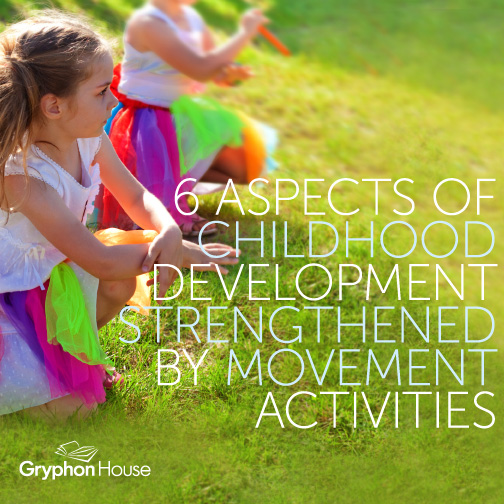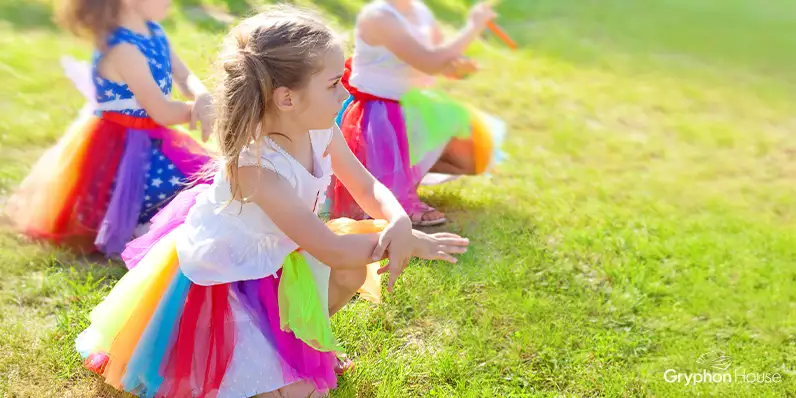
Movement activities for children teach more than just movement. Movement activities offer literacy resources for teachers, mathematics lessons, science, and social-emotional learning.
In their new book, Move to Learn: Integrating Movement into the Early Childhood Curriculum, authors Joye Newman and Miriam Feinberg, PhD, illustrate how movement strengthens the six aspects of early childhood development:
- Language and Literacy - Have the children act out their favorite story.
- Mathematics - Incorporate counting into everyday tasks. For example: "How many cups will we need for snack today? Let's count together." Then clap for every number.
- Science - Ask children to show you, with their bodies, how science works. For example, how plants grow up toward the sun from seeds, or how water changes when it freezes and then melts.
- Social Studies - Create a visual representation of different countries, states, continents or regions in the classroom. Then, have the children walk to each place for a "visit" during the lesson.
- Creative Representation - Utilize finger painting and whole-hand painting. Turn on some music and have the children paint to the rhythm.
- Social Skills - Teach kids to read others' emotions by asking them to express a variety of facial expressions and tell you what they represent. Then, do the same exercise with physical cues and body language.
Want specific activities for each practice area! Click here to read an excerpt of "Move to Learn."
Author(s)Joye Newman, Miriam P. Feinberg, PhD
Jenna Roby
A graduate of High Point University, Jenna Roby served as marketing specialist for Gryphon House from 2013-2015.

